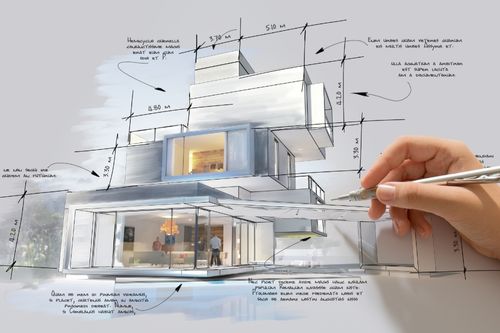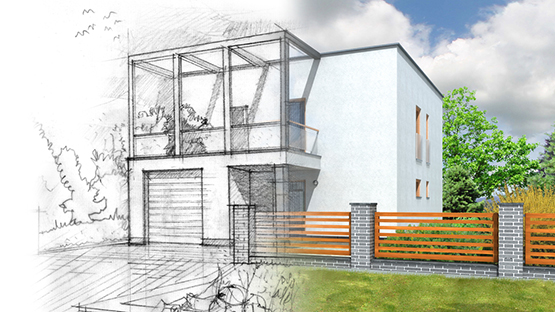A Detailed Review of Building Styles and Their Impact on Modern City Planning and Growth
Architectural designs have long functioned as a mirror to the social values and technical developments of their time, playing an important duty fit modern-day city planning and growth. From the splendour of Neoclassicism to the utilitarian strategy of Brutalism, each style has actually introduced special principles that influence metropolitan looks and performance. As contemporary difficulties emerge, including sustainability and neighborhood demands, recognizing these historic frameworks ends up being essential. The resulting dialogue not just notifies future design techniques but likewise increases pertinent concerns regarding the balance in between heritage and technology in our evolving urban landscapes.

Historic Summary of Building Styles
Throughout background, architectural designs have evolved in feedback to cultural, technical, and ecological aspects. Each period mirrors the prevailing worths, ideas, and innovations of its time, causing an abundant tapestry of style that indicates human creative thinking and adaptation. The old civilizations, such as the Egyptians and Greeks, developed fundamental designs that highlighted symmetry and percentage, offering both practical and aesthetic objectives.
As societies transitioned with the Middle Ages, Gothic style arised, defined by its verticality and intricate describing, mirroring the spiritual goals of the period. The Renaissance marked a resurgence of timeless ideals, combining art and design in innovative manner ins which influenced subsequent designs across Europe.
The Industrial Change introduced new products and building techniques, motivating movements like Innovation, which challenged typical types and embraced simpleness and performance. The 20th century saw a diversity of designs, with Postmodernism reacting versus the plain minimalism of its predecessor, incorporating historical references and eclectic aspects.
Today, architectural styles proceed to develop, driven by globalization and sustainability concerns, reflecting a dynamic interaction in between heritage and innovation (cda architects). This historical summary highlights the significance of style as a mirror of societal development and as a catalyst for city advancement
Secret Architectural Styles Explained
The variety of building styles mirrors the myriad influences that shape our built environment, each symbolizing distinct attributes and cultural significances. Trick building designs consist of Classical, Gothic, Baroque, Modernism, and Postmodernism, each standing for unique historic contexts and visual approaches.
Classical style, rooted in ancient Greece and Rome, stresses balance, percentage, and using columns. On the other hand, Gothic architecture, growing between Ages, is defined by pointed arcs, ribbed vaults, and flying buttresses, developing a spiritual quality in basilicas. Baroque architecture, emerging in the 17th century, is marked by magnificence, sophisticated embellishment, and a vibrant interplay of light and darkness.
Innovation, which gained momentum in the early 20th century, focuses on feature over form, using brand-new products like steel and glass to develop minimal frameworks. Postmodernism, responding against the austerity of Modernism, accepts eclecticism and historical recommendation, often incorporating lively components and irony.
Recognizing these styles gives insight right into the social narratives and technological innovations of their corresponding eras, highlighting just how architecture offers not simply as a sanctuary, yet as a reflection of social worths and aspirations.
Effect On Urban Preparation
Fit the development of cities, building styles considerably influence city planning choices. The selection of building design usually determines the aesthetics, capability, and general character of urban settings. cda architects. For instance, innovation, with its emphasis on minimalism and performance, urges open spaces and the integration of modern technology, forming city formats that focus on performance and access. Conversely, typical styles might stress historical conservation, leading to metropolitan layouts that preserve cultural heritage and advertise pedestrian-friendly settings.
Moreover, architectural designs can impact zoning discover this regulations and land use policies. Urban organizers need to think about the prevailing architectural patterns when designing areas, guaranteeing that new advancements harmonize with existing frameworks. This consideration cultivates cohesive urban landscapes and boosts community identification.
The execution of particular architectural designs can likewise influence socioeconomic factors within a city. As an example, high-end contemporary layouts might draw in wealthy locals and organizations, bring about gentrification, while much more budget-friendly housing services might focus on useful and sustainable styles to fit varied populaces. Ultimately, the interplay in between building designs and metropolitan preparation develops dynamic cities that mirror both historic context and modern requirements, shaping the lived experiences of their occupants.
Sustainability and Modern Design

Contemporary architectural activities, such as biophilic style and eco-friendly architecture, supporter for structures that harmonize with their environments, using all-natural products and advertising biodiversity. These styles commonly incorporate renewable energy resources, such as photovoltaic panels and wind turbines, to lower reliance on nonrenewable fuel sources and reduced carbon impacts.
In addition, the combination of innovative innovations, such as smart structure systems, boosts energy management, enhancing resource use while guaranteeing owner comfort. Ingenious water administration methods, including rainwater harvesting and greywater recycling, more add to sustainable city atmospheres.
Significantly, sustainability expands past ecological problems; it incorporates social and financial measurements. By fostering community health and promoting inclusivity, contemporary architectural designs straighten with lasting growth goals. The evolution of architectural practices continues to shape resilient cities that not only fulfill the needs of the existing however additionally guard the future for generations to come.
Community Involvement in Design
Neighborhood interaction in style serves as an important bridge in between architects and the populaces they offer, ensuring that the constructed environment mirrors check here the demands and desires of its users. This joint procedure invites neighborhood participants to contribute their understandings and choices, cultivating a feeling of ownership and obligation towards the spaces they inhabit.
Reliable neighborhood involvement uses various techniques, such as workshops, studies, and public online forums, to collect varied point of views. These strategies facilitate a two-way discussion, permitting engineers to recognize local contexts while encouraging homeowners to articulate their worries and desires. This inclusivity not only improves the style quality however also advertises social equity by attending to the distinct difficulties faced by marginalized groups.
In addition, neighborhood engagement can lead to innovative solutions that might not emerge in a traditional style process. By integrating regional expertise and social values, engineers can create spaces that resonate even more deeply with individuals, boosting functionality and sustainability. Ultimately, focusing on community engagement in layout processes results in environments that support social communications, assistance well-being, and strengthen area connections, thus playing an essential role fit modern-day see it here metropolitan landscapes.
Verdict
Building designs have exceptionally influenced modern-day city preparation and development, mirroring advancing cultural and technological contexts. The assimilation of historic looks with modern needs fosters city environments that prioritize sustainability and community interaction. As cities continue to grow and adjust, the ongoing discussion in between architectural heritage and contemporary design principles will certainly continue to be vital in producing inclusive, vivid rooms that enhance lifestyle and promote social equity. The future of city development depend upon this unified balance.
Comments on “How CDA Architects Incorporate Eco-Friendly Practices in Architectural Projects”